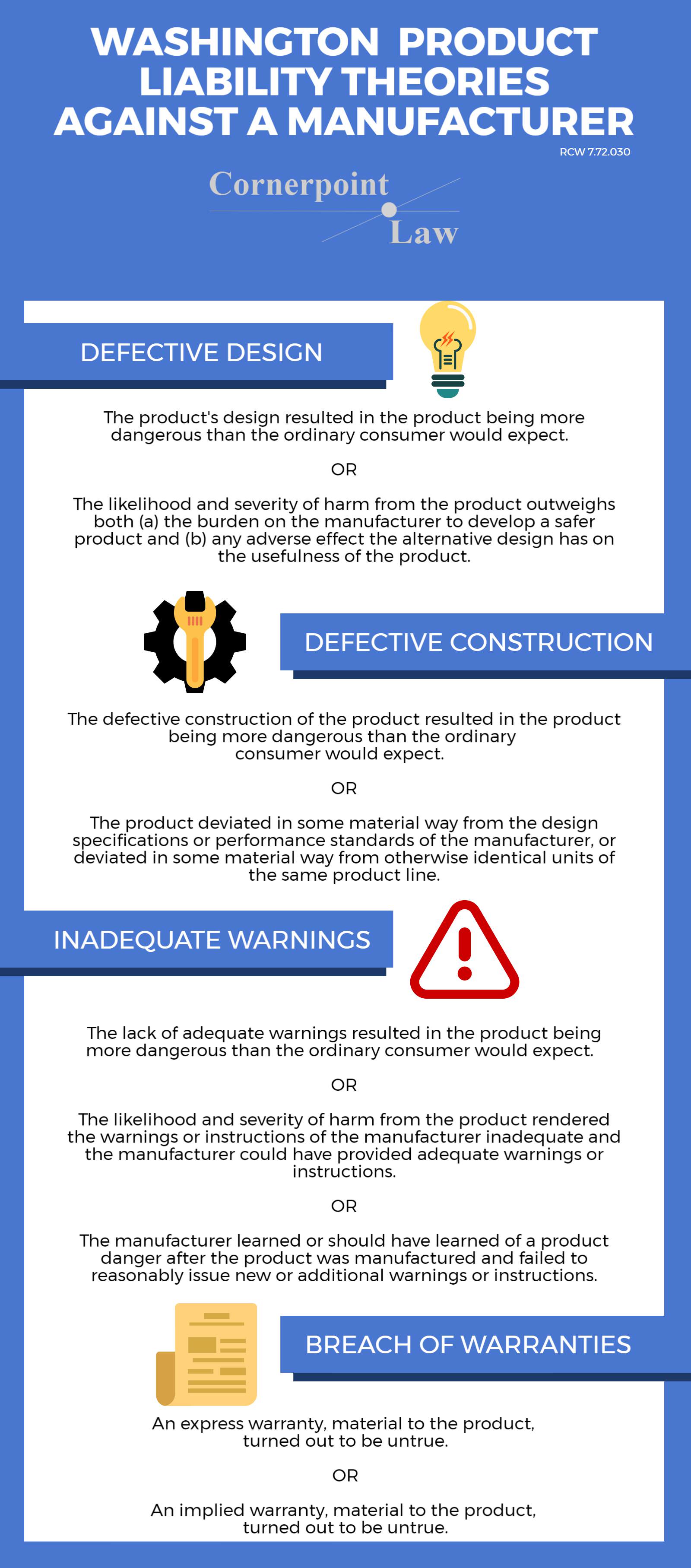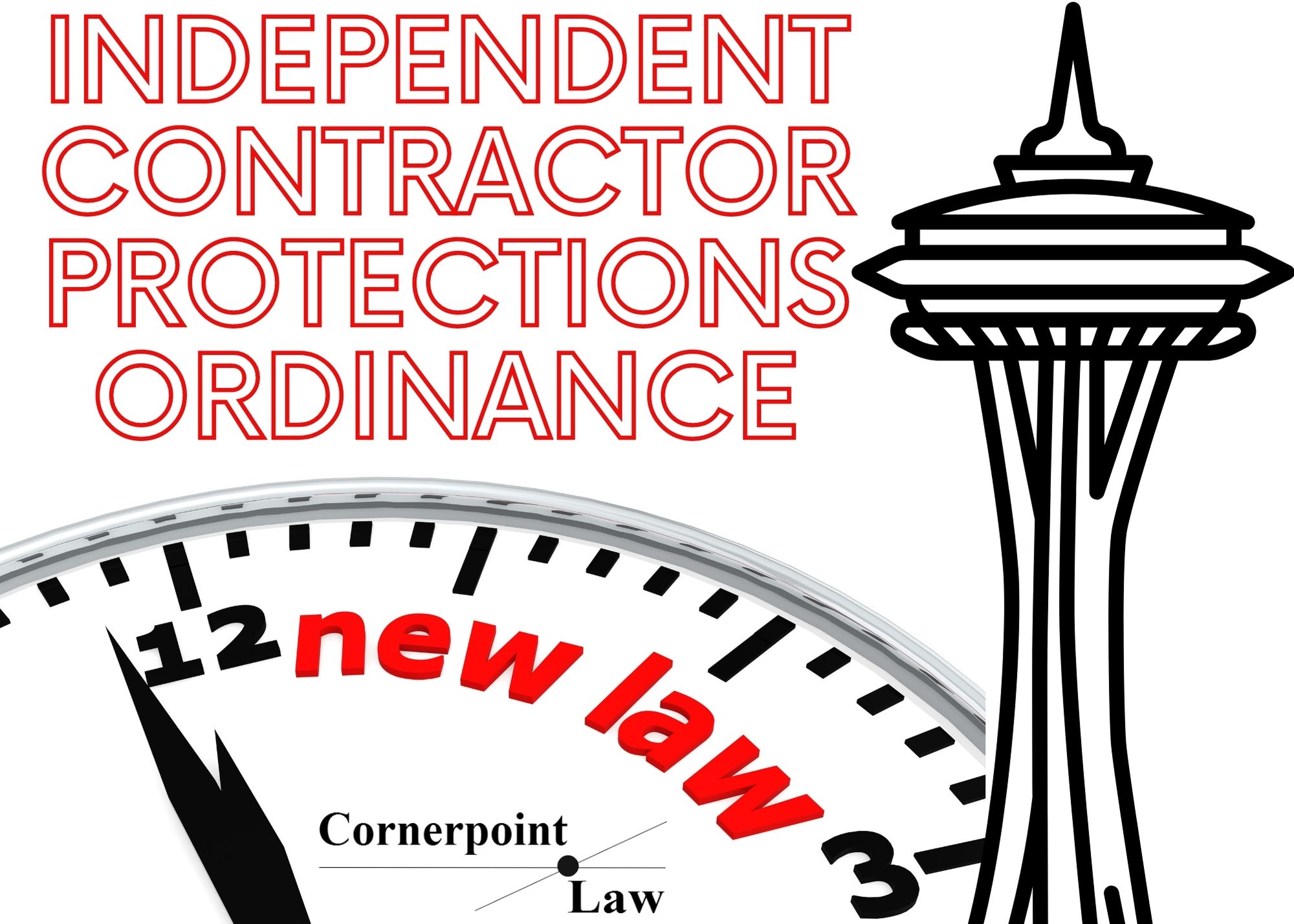Seller Beware: The Buck Stops with the Manufacturer
March 21, 2017
Unauthorized use and/or duplication of blogposts without express and written permission is strictly prohibited. Excerpts and links may be used, provided that full and clear credit is given, and with appropriate and specific direction to the original content.
The author of this post can be reached by phone at 206-693-2718 or by email.
Navigating the Washington Product Liability Act
Part Two: The Buck Stops with the Manufacturer
by Stacia Hofmann
In this second installment of the blog series Seller Beware: Navigating the Washington Product Liability Act, we examine the liability of the originating category of product sellers: manufacturers. We also take a closer look at the Modisette v. Apple lawsuit, and why it provides an effective example of modern product liability law.
Manufacturers bask in the glory of successful or innovative products, but when it comes to liability, they also shoulder the blame. They are in the best position to investigate the design, manufacturing, and testing of the products that they introduce into the marketplace. Since manufacturers can most effectively reduce the risks associated with products, public policy dictates that they carry the greatest legal responsibility.
The Nuts and Bolts of Manufacturer Liability in Washington
If a seller designs, produces, makes, fabricates, constructs, or remanufactures a product or a component part of a product, it is a manufacturer. RCW 7.72.010(2). Manufacturers are “strictly liable” for personal injury or property damage caused by their products. RCW 7.72.030. An easy way to differentiate between strict product liability and ordinary negligence is to remember that reasonableness is tied to the safety of the product in the former instance and to the actions of the manufacturer in the latter. Because a reasonably acting manufacturer may produce an unsafe product, strict liability is generally viewed as less favorable to manufacturers than ordinary negligence.
The Washington Product Liability Act, RCW 7.72.030, is explicit as to when manufacturers can be held liable for injuries and damages resulting from their products.1
:arrow: The product was unsafe because it had a defective design at the time of manufacture.
:arrow: The product was unsafe because it had a manufacturing defect in its construction when the product left the control of the manufacturer.
:arrow: The product was unsafe because it lacked adequate warnings at the time of manufacture — or even after manufacture.
:arrow: The product did not conform to express and implied warranties.
The Modisettes’ Claims Against Apple
 Keeping in mind the above theories of product liability, let’s turn to the Modisette lawsuit against Apple.2 Moriah Modisette, age 5, was tragically killed in an automobile accident in December 2014. According to the Modisettes, the accident occurred while they were stopped on a freeway due to police activity. They allege that driver Garrett Wilhelm was distracted and using the video chat App FaceTime when he rear-ended their vehicle. The Modisette family filed suit against Apple, claiming that the accident was caused by an unsafe product: an iPhone preinstalled with FaceTime.
Keeping in mind the above theories of product liability, let’s turn to the Modisette lawsuit against Apple.2 Moriah Modisette, age 5, was tragically killed in an automobile accident in December 2014. According to the Modisettes, the accident occurred while they were stopped on a freeway due to police activity. They allege that driver Garrett Wilhelm was distracted and using the video chat App FaceTime when he rear-ended their vehicle. The Modisette family filed suit against Apple, claiming that the accident was caused by an unsafe product: an iPhone preinstalled with FaceTime.
Unsafe Product Due to Defective Design
First, the Modisette family alleges a defective design claim against Apple. In Washington, a defective design claim can be proved by either of the following tests:
(1) Consumer Expectations Test: The product was more dangerous than the ordinary consumer would expect, based on factors such as the cost of the product, the seriousness of the potential harm, and the cost and feasibility of minimizing the risk of harm.
(2) Risk-Utility Test: The likelihood and severity of harm from the product outweighed both (a) the burden on the manufacturer to develop a safer product and (b) any adverse effect the alternative design would have had on the usefulness of the product.

The Risk-Utility Test
Under both the Washington Consumer Expectations Test and the Risk-Utility Test, evidence of an alternative, feasible, and safer design might help establish a design defect with the product, and this is really where the Modisettes have focused. They allege that Apple could have designed the iPhone with alternative technology that would automatically prevent users from using FaceTime while driving at highway speeds.
The family cites various surveys and studies showing that despite the known risks of using a cell phone while driving, some drivers still do so. They allege that Apple filed (and obtained) a patent on driver device lock-out technology. The technology apparently uses both motion and scenery analyzers to determine whether a vehicle is traveling above a certain speed, and whether the person using the phone is a driver or a passenger. If the analyzers determine that the person using the phone is a driver traveling above a certain vehicle speed, then certain phone functions are disabled. The Modisettes claim that the iPhone that Wilhelm used had the hardware necessary for this lock-out software, that the software would have prevented the use of FaceTime and thus would have prevented the accident, and that the technology would not have reduced the phone’s usefulness to consumers.
Unsafe Product Due to Inadequate Warnings
 Next, the Modisettes allege that the phone lacked adequate warnings about using FaceTime while driving at highway speeds. In Washington, the Consumer Expectations Test described above can also be used to show a product was unsafe because of a lack of adequate warnings. A second warnings test provides that a product is unsafe if the likelihood and severity of harm from the product rendered the provided warnings or instructions inadequate – so long as the manufacturer could have provided adequate warnings or instructions.3 The Modisettes do not describe warnings or instructions in detail in their complaint.
Next, the Modisettes allege that the phone lacked adequate warnings about using FaceTime while driving at highway speeds. In Washington, the Consumer Expectations Test described above can also be used to show a product was unsafe because of a lack of adequate warnings. A second warnings test provides that a product is unsafe if the likelihood and severity of harm from the product rendered the provided warnings or instructions inadequate – so long as the manufacturer could have provided adequate warnings or instructions.3 The Modisettes do not describe warnings or instructions in detail in their complaint.
Unsafe Product Due to Defective Construction
 Finally, the Modisettes claim that the iPhone was defective in its construction — in essence, a lemon. Again, the Consumer Expectations Test above can be used to show that a product is unsafe because of a defect in construction. Or, it may be unsafe because the specific product at issue deviated in some material way from the design specifications, from performance standards, or from other units of the same product line. The Modisettes’ complaint does not provide any specifics on this claim.
Finally, the Modisettes claim that the iPhone was defective in its construction — in essence, a lemon. Again, the Consumer Expectations Test above can be used to show that a product is unsafe because of a defect in construction. Or, it may be unsafe because the specific product at issue deviated in some material way from the design specifications, from performance standards, or from other units of the same product line. The Modisettes’ complaint does not provide any specifics on this claim.
Conclusion
The legal tests used to prove liability against a manufacturer are well-established in Washington, as shown in the infographic below. But as the Modisette case demonstrates, as technology advances, new products are innovated, and traditional products become smarter, the evidence used to support or oppose product liability claims will also continue to evolve.

This blog is for informational purposes only and is not guaranteed to be correct, complete, or current. The statements on this blog are not intended to be legal advice, should not be relied upon as legal advice, and do not create an attorney-client relationship. If you have a legal question, have filed or are considering filing a lawsuit, have been sued, or have been charged with a crime, you should consult an attorney. Furthermore, statements within original blogpost articles constitute Stacia Hofmann’s opinion, and should not be construed as the opinion of any other person. Judges and other attorneys may disagree with her opinion, and laws change frequently. Neither Stacia Hofmann nor Cornerpoint Law is responsible for the content of any comments posted by visitors. Responsibility for the content of comments belongs to the commenter alone.
- The product defect must be the cause of the injury or damage. ↩
- Although the Modisette accident occurred in Texas and the lawsuit was filed in California, the complaint – available here – provides an illustrative guide through Washington’s laws. ↩
- Additionally, if a manufacturer learned or should have learned that a product was unsafe after the product was manufactured, the manufacturer should have issued new, adequate warnings or instructions concerning the danger or otherwise informed product users. ↩




